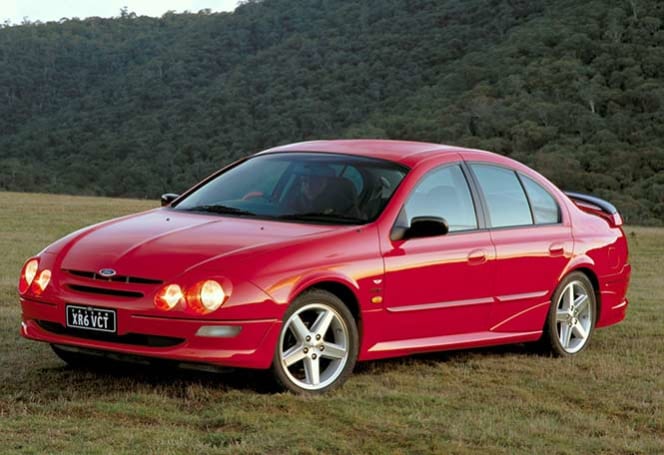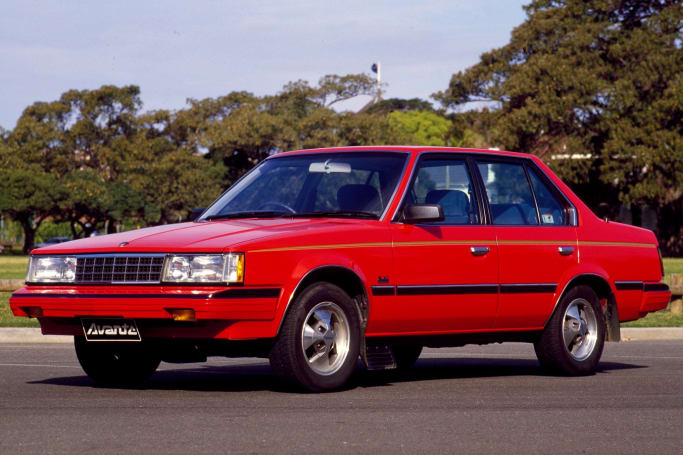
The new car sales winners of 2024: Toyota, Mitsubishi, Ford, BYD, Suzuki, GWM and more!
The Australian new car market is more competitive than ever before and the 2024...
Browse over 9,000 car reviews

Prices of anything vaguely collectible and Australian-made have really gone through the roof lately. The reasons depend on who you talk to, but it’s obvious that stay-at-home rules have led some people to use what would have been annual-holiday money to buy themselves a weekend car. And what could be better than a genuine Aussie original?
In the meantime, the values of everything that was already collectible has gone even further into orbit. A Ford Falcon GT-HO Phase III recently changed hands for more than $1.3 million, and Peter Brock’s personal Group A SS Commodore topped the magic million when it went to auction a few months ago. Those results, of course, have dragged the values of lesser collectibles up with them, and it’s now a matter of conjecture over where it will all end.
But in the meantime, what about those of us mortals on real-world wages (if we’re lucky) who’d also like a piece of the local-car collector scene for ourselves? The commonly held view is that we’ve missed out, but we reckon there are still some worthwhile cars out there with local build-plates that are yet to go berserk price-wise. In fact, buy the right one and you might even see its value hike over the next couple of years, making you a nice little profit once you’re ready to move it on.
Keep in mind though, this is by no means a definitive car investing guide, think of it more as the conjecture of one well-experienced motoring writer.
So, what are the Aussie cars that are still cheap enough for the likes of us, that are also worth collecting? Well, in no particular order:

Values of earlier, E-Series Falcons have already moved big time. But the unloved AU is still a desperately cheap car. Translated to the sporty XR models, the quad-headlight front styling pretty neatly fixed most of what was wrong with the look of the AU.
V8-powered XR8s have already leapt up the price-charts, but the six-cylinder XR6 is a great example of a tough, inline-six-powered family car. The interior is a bit confronting even now, but the AU is big, roomy and handles well. The irony of the last affordable XR6 is that the AU platform, with its brilliant front end, was the best driving Falcon ever made.
Watch out for crash damage, rust in the bootlid, tatty interiors and high-milers. Most are automatics, so check for prompt gear selection and no slurred changes or untoward noises. An example with the VCT engine, independent rear suspension and factory sunroof is the goal, but even a base-model with wind-up windows is a good drive.
Price: From $6000 to $15,000

We should never forget that Nissan built a lot of cars in Australia, and one of the better ones was the N13 Pulsar. Built in Melbourne, the N13 hatchback was also the car that introduced us to the Pulsar Q badge. Locally-made cars were part of a joint venture with Holden at the time (who sold the car as an Astra) so it got a Nissan body with a Holden engine, in the Q’s case, a 1.8-litre fuel-injected version of the Family 2 four-cylinder. Throw in a five-speed manual gearbox and lairy colours and you had a bargain hot hatch that still rates a mention.
The Pulsar Q kicked off in 1987 and was an immediate hit. The engine with 79kW wasn’t particularly smooth, but it was torquey and made its point. The handling was a good combination of elastic ride and decent cornering and the formula just seemed right. Still does… A facelift for 1989 brought even brighter colours and a little extra horsepower, but either version is a good, solid, retro hatch choice provided you find a good one.
Speaking of which, the main thing to look for is a service record and an odometer reading. The Family 2 is good when it’s going properly, but can go downhill pretty fast and begin using oil and producing lots of rattles and smoke. Rust can also be a problem, so check around the screens, roof gutters, sills and lower guards for any signs of rot. The manual gearbox might crunch a bit going into second from cold but, believe it or not, they were a bit like that from new.
Price: From $3000 to $8000

While early-model Statesmans have really stacked on the dollars in line with all older Aussie cars, there’s a generation of long-wheelbase Holdens that still represent good buying with some room for adding value. The VQ saw the return of the Statesman badge and all that extra back-seat stretching room for 1990 and ran – along with regular updates to the Commodore on which it was based – all the way to 1999.
These are big, comfy cars with a lot of road presence and enough standard equipment to be convincing even today. They’re probably also the cheapest way to get into a mainstream Australian V8. That said, don’t rule out the V6 version which is even cheaper and still does the job. There was also the option of a supercharged version of the V6 which is worth consideration, too.
Watch out for worn out engines, brakes and suspension, and be aware that the independent rear end introduced in the VQ model (the first one) can produce fast rear tyre wear if everything isn’t just so. Be wary, too, of a car with huge kilometres on board as it may have been a hotel limo or executive taxi, two chores the car was destined for when it was new.
Price: From $4000 to $12,000

Panel vans are now riding the crest of an incredible wave of popularity that has seen their values spike in incredible fashion. Almost overnight (or so it seems), something like a genuine Holden Sandman panel van has gone from a worn-out work-van to a fully restored collectible with an eye-watering (up to $100,000) pricetag. Predictably, the same thing has happened for other Aussie vans including the Ford Falcon and Valiant vans.
But there is hope. And that is to be found in the very last of the Ford Falcon vans which used a bodyshell that dated back to the XD model of 1979. But from the windscreen forward, the last of the Ford vans used the engine, gearbox, front suspension and driveline from the much newer ED Falcon sedan range. With the overhead camshaft six-cylinder engine, these models had plenty of power and torque and the updated interior was very welcome, too. In some ways, it’s still a very old car, but not as ancient as the Aussie vans that are pulling the big dollars. Add a set of period-correct Sundowner decals (Ford’s factory option in the 1980s) and you’re off the end of the cool scale.
Typical problems involve an example that has been used hard since 1994 (which is a lot of them). The bodies can rust terribly around the roof gutters and sills, and make sure the firewall isn’t about to fall out. The load areas can take a real beating, too. On the flip-side, the engines are strong and the mechanicals cheap and easy to replace or repair.
Price: From $5000 to $15,000

Though based on the rather dull RT140 series of locally-made Coronas, the Avante really was something else. And while it might go unnoticed when you drive down the average street, if anybody standing on that street is a proper car fan, the Avante will receive the, perhaps unspoken, credit it merits.
It’s not that simple, of course, and the Avante you want is a post-1984 (facelift) model with the optional 2.4 litre fuel-injected engine. Against the wheezy old 2.0-litre in the cheaper versions of the car (including an entry-level Avante) the electronically injected 2.4 was a revelation. Even now, its 87kW and decent torque give it an effortless feel that is best experienced with the optional five-speed manual. The facelift also brought the option of an imported independent rear suspension that was plumbed into the locally-built body. The other option is the limited-edition SR model which got the big, burly 2.4-litre engine and five-speed manual but the live rear axle. All SRs were painted white.
Toyota-tough means a high-miler isn’t always trouble. Even so, you’d want to see some form of service record. Make sure the gearbox doesn’t crunch and that the engine starts easily from cold and idles smoothly. Check the tread for weird wear patterns on the rear of IRS cars, suggesting worn suspension.
Price: From $4000 to $10,000
Comments